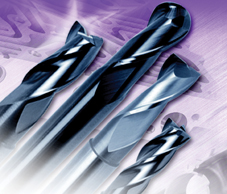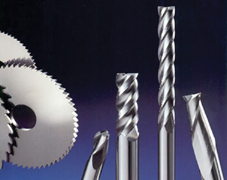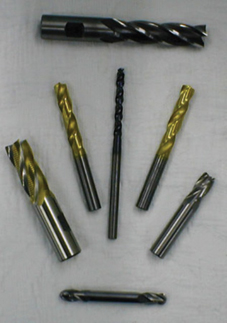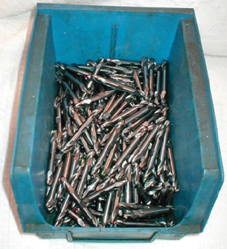Tool grinding can be taxing and labor-intensive. The surface grinding system requires an operator to monitor the operation continually. But what happens if some parts show signs of burrs or tooling wear. Some operators bring them to a machine shop where a technician sharpens them, but usually it takes time before the handed over tools for sharpening are finished.


Tool grinding can be made more efficient with its tool life extended as well. Tool life isn抰 measured by the number of hours a tool spends in a turret press; it's about the number of hits it makes, and in what material. For instance, stainless steel is hard and abrasive, so it takes the tool edge off a little faster than the pre-painted and galvanized material. Also, different parts require different holes. Some parts need 1/4-inch or 3/8-inch round punches for screw holes. Others may need obround punches, and still others may use pierce-flare tools to create forms that aid part assembly. Some tools may perform a thousand hits a week, others only 50 or so. But not all tools need sharpening at the same time. To make the most of operating efficiency, operators must maximize hits per tool; minimize tool change-outs; and maximize the effectiveness of tool sharpening. Balancing all three, allows a company's turret presses to process more quality parts in less time.
Extending tool life A company must promote practices to extend tool life since manufacturing plants work with a tremendous variety of products, and hole sizes change frequently. There are relatively common industry practices that follow the lean mantra or minimizing set-ups. If a large number of holes require one punch diameter, the operator may load two identical tools into the turret. This way, if one tool shows signs of wear, the operator can alter the program to punch with the new tool to finish out the run. Other turret tools may punch certain holes in one hit and nibble out other holes larger than the punch diameter, for example, a 1-inch round punch nibbling out a 1 1/2-inch diameter hole. However, nibbling can exert significant side loading around the punch outside diameter as well as the inside diameter of the sleeve, and also takes a significant number of hits. Depending on the application, a 1-inch punch may take 50 hits to nibble out a 1 1/2-inch hole. With certain parts, depending on volume, a company may find it actually takes less time to change out to a larger tool that punches a hole with one hit than nibbling it with multiple hits. This not only takes less time, it also reduces tool wear, adds to punch life, and causes fewer trips to the grinding station. However, it is still a must for an adequate number of trips to the grinding station. Since letting a tool go too long without grinding can seriously degrade tool and part quality, not to forget tool life. To streamline operations, a company should invest in two punches and die grinders. Here the machine rotates both the cubic boron nitride (CBN) grinding wheel in the shape of an upside-down soup bowl and the table holding the punch underneath. Unlike the surface grinder, the grinding head is locked into position.


With the head being locked into position on the down-feed, the operator doesn抰 have to traverse anything. The locked grinding wheel makes the operation more stable. In a manual operation, the operator brings the wheel head across the part, which makes the machine rigidity critical. If the machine isn抰 as rigid as it needs to be, it may flex as the wheel first contacts the tool. If the operator is not careful, it might not grind the tool flat. So by rotating the part under a spinning wheel, it ensures the part will be ground down flat and it doesn抰 require the operator to feed and monitor the system. Using th
Nike Kyrie 5
 Tool grinding can be made more efficient with its tool life extended as well. Tool life isn抰 measured by the number of hours a tool spends in a turret press; it's about the number of hits it makes, and in what material. For instance, stainless steel is hard and abrasive, so it takes the tool edge off a little faster than the pre-painted and galvanized material. Also, different parts require different holes. Some parts need 1/4-inch or 3/8-inch round punches for screw holes. Others may need obround punches, and still others may use pierce-flare tools to create forms that aid part assembly. Some tools may perform a thousand hits a week, others only 50 or so. But not all tools need sharpening at the same time. To make the most of operating efficiency, operators must maximize hits per tool; minimize tool change-outs; and maximize the effectiveness of tool sharpening. Balancing all three, allows a company's turret presses to process more quality parts in less time. Extending tool life A company must promote practices to extend tool life since manufacturing plants work with a tremendous variety of products, and hole sizes change frequently. There are relatively common industry practices that follow the lean mantra or minimizing set-ups. If a large number of holes require one punch diameter, the operator may load two identical tools into the turret. This way, if one tool shows signs of wear, the operator can alter the program to punch with the new tool to finish out the run. Other turret tools may punch certain holes in one hit and nibble out other holes larger than the punch diameter, for example, a 1-inch round punch nibbling out a 1 1/2-inch diameter hole. However, nibbling can exert significant side loading around the punch outside diameter as well as the inside diameter of the sleeve, and also takes a significant number of hits. Depending on the application, a 1-inch punch may take 50 hits to nibble out a 1 1/2-inch hole. With certain parts, depending on volume, a company may find it actually takes less time to change out to a larger tool that punches a hole with one hit than nibbling it with multiple hits. This not only takes less time, it also reduces tool wear, adds to punch life, and causes fewer trips to the grinding station. However, it is still a must for an adequate number of trips to the grinding station. Since letting a tool go too long without grinding can seriously degrade tool and part quality, not to forget tool life. To streamline operations, a company should invest in two punches and die grinders. Here the machine rotates both the cubic boron nitride (CBN) grinding wheel in the shape of an upside-down soup bowl and the table holding the punch underneath. Unlike the surface grinder, the grinding head is locked into position.
Tool grinding can be made more efficient with its tool life extended as well. Tool life isn抰 measured by the number of hours a tool spends in a turret press; it's about the number of hits it makes, and in what material. For instance, stainless steel is hard and abrasive, so it takes the tool edge off a little faster than the pre-painted and galvanized material. Also, different parts require different holes. Some parts need 1/4-inch or 3/8-inch round punches for screw holes. Others may need obround punches, and still others may use pierce-flare tools to create forms that aid part assembly. Some tools may perform a thousand hits a week, others only 50 or so. But not all tools need sharpening at the same time. To make the most of operating efficiency, operators must maximize hits per tool; minimize tool change-outs; and maximize the effectiveness of tool sharpening. Balancing all three, allows a company's turret presses to process more quality parts in less time. Extending tool life A company must promote practices to extend tool life since manufacturing plants work with a tremendous variety of products, and hole sizes change frequently. There are relatively common industry practices that follow the lean mantra or minimizing set-ups. If a large number of holes require one punch diameter, the operator may load two identical tools into the turret. This way, if one tool shows signs of wear, the operator can alter the program to punch with the new tool to finish out the run. Other turret tools may punch certain holes in one hit and nibble out other holes larger than the punch diameter, for example, a 1-inch round punch nibbling out a 1 1/2-inch diameter hole. However, nibbling can exert significant side loading around the punch outside diameter as well as the inside diameter of the sleeve, and also takes a significant number of hits. Depending on the application, a 1-inch punch may take 50 hits to nibble out a 1 1/2-inch hole. With certain parts, depending on volume, a company may find it actually takes less time to change out to a larger tool that punches a hole with one hit than nibbling it with multiple hits. This not only takes less time, it also reduces tool wear, adds to punch life, and causes fewer trips to the grinding station. However, it is still a must for an adequate number of trips to the grinding station. Since letting a tool go too long without grinding can seriously degrade tool and part quality, not to forget tool life. To streamline operations, a company should invest in two punches and die grinders. Here the machine rotates both the cubic boron nitride (CBN) grinding wheel in the shape of an upside-down soup bowl and the table holding the punch underneath. Unlike the surface grinder, the grinding head is locked into position. 
 With the head being locked into position on the down-feed, the operator doesn抰 have to traverse anything. The locked grinding wheel makes the operation more stable. In a manual operation, the operator brings the wheel head across the part, which makes the machine rigidity critical. If the machine isn抰 as rigid as it needs to be, it may flex as the wheel first contacts the tool. If the operator is not careful, it might not grind the tool flat. So by rotating the part under a spinning wheel, it ensures the part will be ground down flat and it doesn抰 require the operator to feed and monitor the system. Using thNike Kyrie 5
With the head being locked into position on the down-feed, the operator doesn抰 have to traverse anything. The locked grinding wheel makes the operation more stable. In a manual operation, the operator brings the wheel head across the part, which makes the machine rigidity critical. If the machine isn抰 as rigid as it needs to be, it may flex as the wheel first contacts the tool. If the operator is not careful, it might not grind the tool flat. So by rotating the part under a spinning wheel, it ensures the part will be ground down flat and it doesn抰 require the operator to feed and monitor the system. Using thNike Kyrie 5













